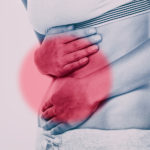By David Blyweiss, M.D., Advanced Natural Wellness
August 9, 2013
- E. coli, salmonella and more found in most meat and poultry
- 87% of grocery meat exposed to fecal matter
- How to avoid putting bacteria-laden meat on the dinner table
I’m not a big meat eater.
However I do enjoy a steak or rack of lamb every now and then.
But believe me, when it comes time to selecting a cut of meat I always look for the highest quality sources I can find. And there’s good reason for it.
Today’s meats are loaded with things I would never intentionally place on my dinner plate and neither should you.
Livestock and poultry consume grains from genetically altered food sources. They are also pumped full of hormones to plump them up… (until recently Pfizer corporation made and sold to the chicken factories an arsenic compound which helped plump chicken breasts even bigger but had the downside of sharing this arsenic with you.)
And the amount of antibiotics fed to these animals continues to grow… as of 2011, according to the Pew Charitable Trust organization, 4/5 of all antibiotics consumed in the U.S is done so by our livestock industry.
It may sound unbelievable, but about 70% of all antibiotics in the U.S. are used on healthy farm animals. In 2011 that added up to 30 million pounds of antibiotics.
Open your arteries, improve blood flow for a new health miracle...
Did you know your circulatory system has over 60,000 miles of arteries, veins and other blood vessels, if stretched end to end?
But as you age, your blood vessels undergo changes, which may cause them to stiffen, thicken and get clogged.
GOOD NEWS! Doctors have now identified a “Miracle Molecule” inside your arteries that helps OPEN your arteries and IMPROVE blood flow.
It’s what Dr. Valentin Fuster calls it, "One of the most important discoveries in the history of cardiovascular medicine."To you, that means...
- Healthy blood pressure
- Sharper mind and memory
- Skyrocketing energy and muscular strength
- Increased pleasure and passion in the bedroom
- Improved circulation to every cell and organ in your body
Go here to discover a new natural way to significantly boost the levels of this miracle molecule in YOUR body NOW!
If they were used on the animals because they were sick, that would be one thing. But they aren’t. Antibiotics are just a cheap way to make them grow fat more quickly.
Well, it also allows the farmers and ranchers to raise them in unsanitary living conditions. And they are exposed to all kinds of nasty bacteria. That includes feces, too. This can make the animals sick. So pumping them up with antibiotics is often a preventive measure.
This blatant misuse of antibiotics on animals is a huge issue today.
You see, overuse of antibiotics causes an increase in antibiotic-resistant bacteria. Simply put, it causes them to lose their effectiveness against human disease.
The National Antimicrobial Resistance Monitoring System indicates 95% of factory raised chickens have Campylobacter resistant to tetracycline… and nearly 75% of the Salmonella bacteria found on retail chicken breast (12% of them) were resistant to at least one antibiotic.
But there’s also another issue here. And it’s an even bigger one.
This abuse of antibiotics is causing a bad health risk. You see, most commercial meat today is teeming with these antibiotic-resistant bacterium. Which now includes things like Enterococcus and Escherichia coli as well as those mentioned above: Salmonella and Campylobacter.
And after reading a new report from the Environmental Working Group, I’m more convinced than ever that this problem is reaching a crisis point.
Let me tell you what happened…
The World's Quickest Solution for Ending Prostate and Urinary Misery
This has recently been revealed to be one of the only real breakthroughs in prostate health.
The seeds of a strange fruit (sometimes called "Chinese Apples") hold powerful phytonutrients that are a revolution in prostate health.
In fact, UCLA and Veterans Administration research have now proved this to be true.
Not only that, but it may be the worlds quickest solution for ending prostate misery.
Simply stated, these phytonutrients represent a huge step beyond beta sitosterol, saw palmetto, and other phytosterols alone.
Simply click HERE if you want to have fast prostate relief...restful, uninterrupted sleep...no more constant "urges to go"...enhanced virility...and optimal prostate support for life.
Just a few months ago a report was put out by the National Antimicrobial Resistance Monitoring System or NARMS. It’s called the Retail Meat Annual Report. This report is a huge collaboration between the Food and Drug Administration, Centers for Disease Control and Prevention and numerous state health departments.
It’s a pretty important report. It monitors the amount of certain types of bacteria found in store-bought meat. And it’s a tough read! All told, it’s an 82-page report filled with chemical breakdowns, antibiotic and bacterial concentration levels and page after page of statistics.
So I was excited when the Environmental Working Group got their hands on it. This group took the 82-page scientific analysis and broke it down into something anyone can grasp.
And you’ll be shocked at what they found hiding in the report (which was based on samples collected in 2011.)
First off, the NARMS report found that most supermarket meat samples contained significant amounts of the superbug versions of salmonella and campylobacter. Together, these cause about 3.6 million cases of food poisoning each year.
They also discovered that about 53% of raw chicken samples were tainted with an antibiotic-resistant form of E. coli. Certain strains of E. coli can cause diarrhea, urinary tract infections and pneumonia.
But here’s the real whopper.
A surprising 87% of the store-bought meat was contaminated with antibiotic-resistant Enterococcus bacteria. That means most of this meat likely came in contact with fecal matter at some point. You want feces with those fries?
Breaking it down by category, 39% of chicken was contaminated. So was 81% of turkey, 55% of ground beef and 69% of pork chops.
Now you may never have heard about this type of bacteria before. But it’s the third-leading cause of infections in the intensive care units in U.S. hospitals.
I wouldn’t eat this. And you shouldn’t be eating it – or feeding it to your family – either!
Here’s what you should look for when selecting meats for your dinner plate…
There are plenty of challenges when it comes to eating meat.
Commercial products are loaded with unhealthy substances. And we also eat too much of it when compared to the amount of fruits and veggies we consume.
That’s why I always suggest keeping meat consumption low. It should be just about 13% of your diet. And it should be the absolute best-tasting, healthiest meat money can buy.
When it comes to red meat, I prefer lamb to beef. Specifically, grass-fed, New Zealand lamb. Unlike North American livestock, these creatures are able to roam freely, eat a healthy diet, and are hormone and antibiotic free. If not lamb, then grass-fed buffalo or beef works.
And If I’m going to enjoy poultry, I’ll always choose turkey over chicken. But in both cases you should always select your poultry from free-range sources.
Any meat you purchase should be certified organic. The folks who produce these meats don’t rely on hefty doses of antibiotics to protect against poor living conditions. They practice preventive medicine, provide sanitary living conditions and naturally keep their animals in top-notch health.
This prevents the development of superbugs. It also keeps things like genetically altered grains, pesticides, hormones and other harmful substances out of our bodies.
It’s also a good idea to bag your meat separately after buying it. And in the fridge, always store it in a separate compartment from your fruits, vegetables and other fresh foods.
Resources:
2011 Retail Meat Report. National Antimicrobial Resistance Monitoring System. Feb 2013.
Superbugs Invade American Supermarkets. Environmental Working Group. Apr. 2013.






